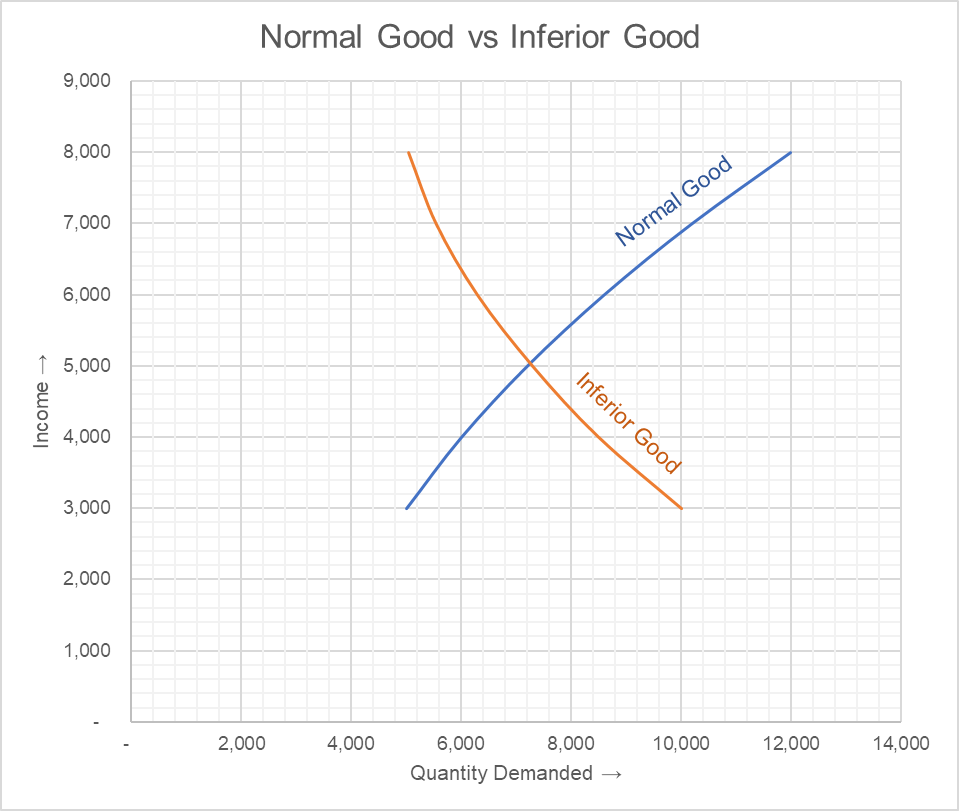Normal Good vs Inferior Good
If the quantity demanded of a product increases with increase in consumer income, the product is a normal good and if the quantity demanded decreases with increase in income, it is an inferior good. A normal good has positive and an inferior good has negative elasticity of demand.
Your disposal income is limited which you must spend after prioritizing your needs and wants. Food and housing are the important, a music concert or a ride in a Lamborghini not so much. Even in deciding what and where to eat, you need to look at your budget. If your income is low, you might prefer to cook yourself if that’s least costly. If there is a change in your income, you adjust your choices up or down.
Normal Good
If you consume more of a product if there is an increase in your income, it is called a normal good. Due to increase in your budget, you forego consumption of a good that gave you less utility and switch to the new product as it gives you more satisfaction (due to whatever reason i.e. quality, brand, etc.)
Income elasticity of demand is defined as percentage change in quantity demanded divided by percentage change income. If quantity demanded increases with increase in income, the income elasticity is a positive number. If follows that a normal good should have positive income elasticity.
Following are a few examples of a normal good:
- Luxury goods such as Lamborghinis, designer perfumes and clothes; because if there is increase in your income level, you can afford to pay for the upgrade in your social status.
- Vacations and other leisure activities; if your income is high, you can afford to take off from work, bear the travel and hotel costs, etc.
- Taxis and ride-hailing services like Uber; if you have more income, you can switch from crowded public transportation to cabs and other dedicated modes of transportation.
- Education; if your income is high, you can afford university degrees (education can also be an inferior good for some people).
- High-end restaurants; with increase in income, you can afford the luxury of expensive dine-outs
Inferior Good
If you consume less of a product if there is an increase in your income, the product is an inferior good. If is inferior because it gives you less satisfaction and you switch to better products if your budget permits.
An inferior good has a negative income elasticity of demand.
Examples of inferior goods include:
- Public transportation: if your income decreases, you switch from taxis to public transport because it is less expensive.
- McDonalds (when compared to high-end eateries): because fast food outlets are less heavy on your pocket.
- Education: if you income falls, you might be inclined to pursue further education to increase your future income.
If we plot the quantity demanded on x-axis and income level on y-axis, we get an upward-sloping curve for a normal good and a downward sloping curve for an inferior good.

Understanding of a normal good and an inferior good is important because it tells us what will happen to demand for different products in booms and busts. Demand for normal goods (say Uber, Airbnb) should increase as the general income level rises and demand for inferior goods should increase if the economy is in a recession.
by Obaidullah Jan, ACA, CFA and last modified on